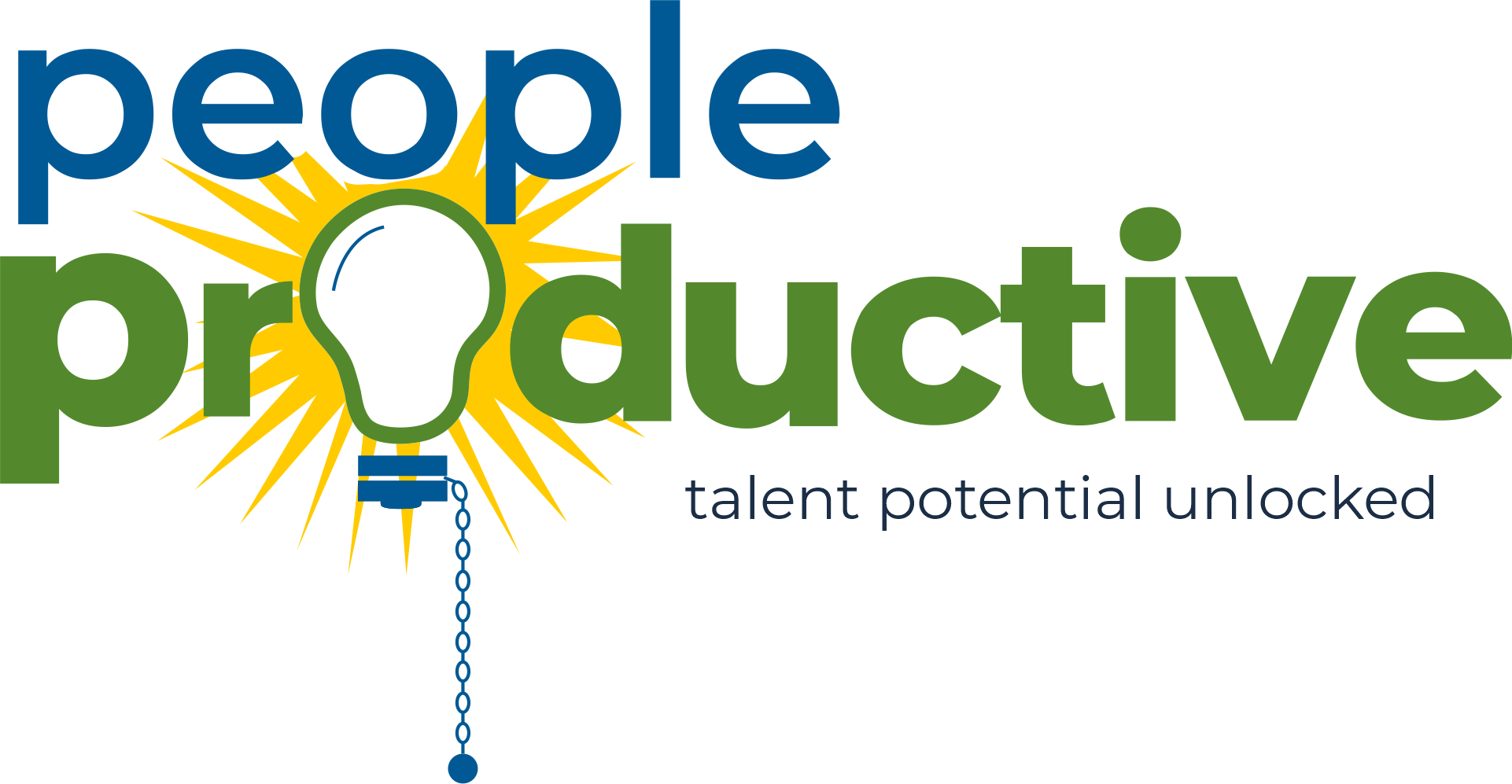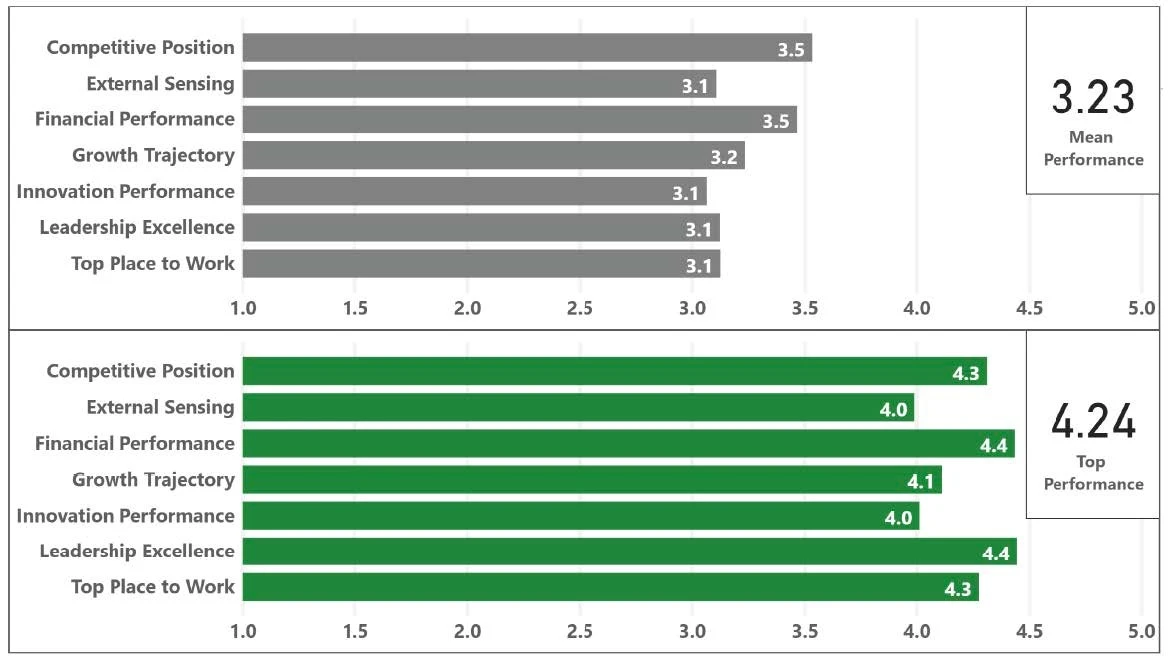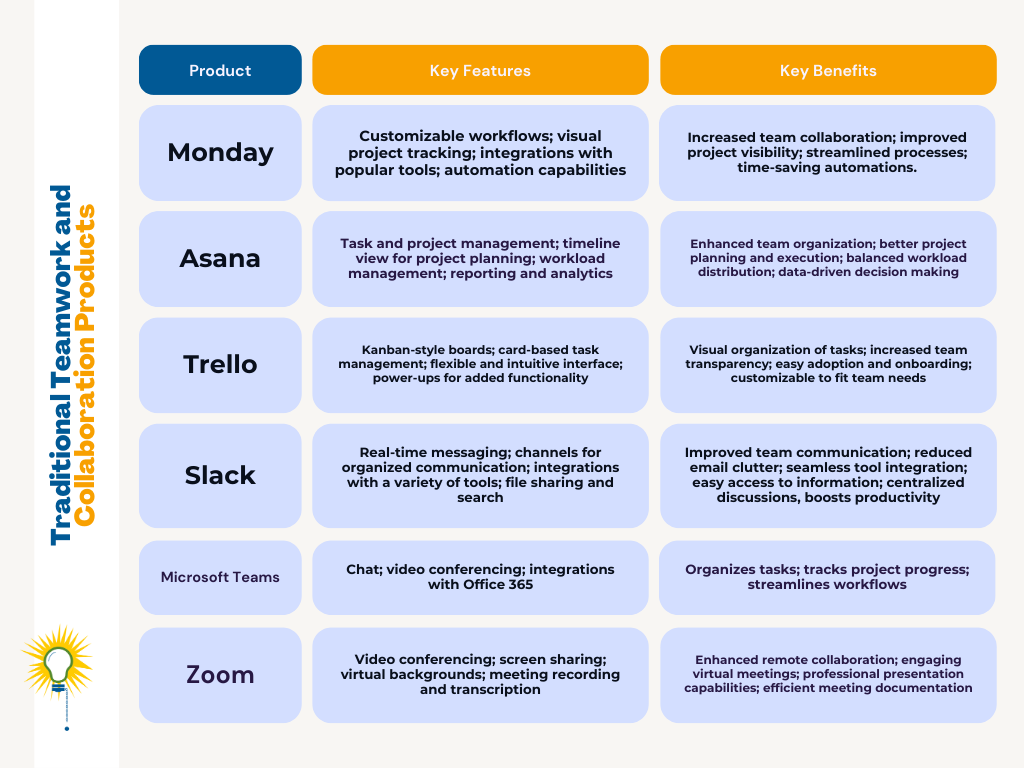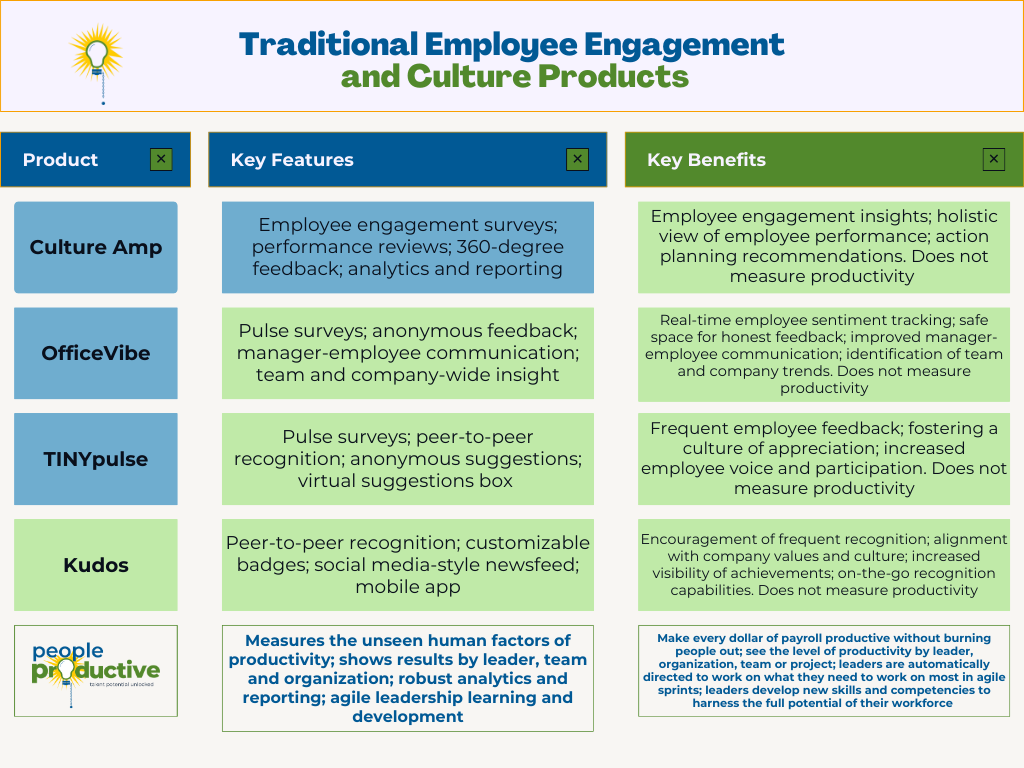Why Companies Struggle to Increase Workforce Productivity and What to do About It
Increasing workforce productivity has become an existential imperative for organizations striving to outcompete and thrive. The recent PWC Global CEO Survey revealed a startling finding based on interviews with over 4700 global CEOs.
These CEOs believe that 40% of their workforce’s time is wasted on unproductive and inefficient activities creating a self-imposed $10 trillion dollar tax on productivity. That drain on performance leads 45% of these CEOs to believe their company will not exist in 10 years unless they increase workforce productivity. Based on my research and experience, I agree.
Harnessing a large percentage of the untapped 40% is the difference between a company that is thriving versus one that is struggling to survive. The workforce productivity challenge is the result of leadership teams that know everything about their products, processes, and technology, but very little about the unseen human factors that drive the productivity of the modern workforce.
This comprehensive article explores how C-Suite executives can permanently take advantage of this productivity opportunity and future proof their firm without burning people out. Harnessing that 40% loss in productivity creates the highest ROI of any initiative, including AI, and results in a workforce that is both productive and engaged.
Table of Contents
1.Key Takeaways
2.Why Increasing Workforce Productivity Matters
3.PeopleProductive’s Workforce Productivity Research Findings
4.Top Level Drivers of Workforce
5.Tactics to Boost Workforce Productivity – Common Methods
6.Tactics to Improve Workforce Productivity – Key Missing Ingredients
7.Tools to Increase Workforce Productivity
8.YouTube Video Series – How to Increase Workforce Productivity
9.Frequently Asked Questions
10.Conclusion
Key Takeaways
•In the average company, 40% of payroll expense produces no value. Improving workforce productivity has the highest ROI of any initiative you undertake because it boosts the contribution of every worker.
•Companies that prioritize workforce productivity gain a significant competitive advantage, with top-performing organizations outperforming their counterparts by substantial margins.
•Addressing workforce productivity issues holistically, including leadership, culture, enablement, relationships, and mood, is a crucial prerequisite for enterprise transformation.
•Implementing effective tactics, such as a more productive leadership influence, efficient meetings, improved teamwork, and work-life balance, can significantly boost workforce productivity.
•Measuring productivity through metrics, like revenue per worker and time to value, is essential for tracking progress.
Why Increasing Workforce Productivity Matters
Companies have historically focused their investments on implementing one generation of technology after another while continuously ignoring workforce productivity. While initiatives like AI are undoubtedly important, the biggest opportunity lies in tapping into the full potential of a company’s workforce.
Workforce productivity and engagement are inextricably linked. Disengaged workers are often unproductive, and vice versa. Gallup’s recent research, The New Challenge of Engaging Younger Workers revealed that younger workers are more disengaged than ever with only:
•31% of older millennials engaged
•35% of younger millennials and Gen Z’s engaged as of February 2024.
The disengagement has workers sleepwalking through part of every day. As the CEO and founder of PeopleProductive, a company that focuses on improving workforce productivity, I can attest that the CEOs’ sense of 40% of their people’s time being wasted aligns with our research and client work over the past decade. Workers are often 110% busy yet only 60% productive, resulting in organizations suffering from too much motion but not enough momentum.
Time is ineffectively consumed by slow decision-making, unproductive meetings, siloed work environments, uninspired workers, constant interruptions, unproductive behaviors, stress, and burnout. Additionally, remote workers often feel isolated and disconnected because leaders do not realize is their a responsibility to foster strong working relationships among team members.
Creating a more productive workforce has the highest ROI of any single strategy. A company with a $100 million payroll that is only 60% productive is squandering $40 million of productivity. As workforce productivity improves, the improvements yield an ongoing dividend, enabling organizations to do more with less.
To outcompete, executive leadership teams must make workforce productivity a strategic imperative. They must measure, monitor, and continuously improve the productivity of their workers, holding every leader accountable for building the necessary skills to accomplish this.
How Much Money is your Firm Leaving on the Table?

PeopleProductive’s Workforce Productivity Research Findings
To understand the impact of culture on enterprise productivity and performance, our team at PeopleProductive and Rutgers Business School conducted a joint study in 2020, assessing the business school’s alumni population.
The results were clear: The best leadership teams skillfully utilize human factors to create a significant business edge.
They recognize two things: People are an asset, not an expense, and human productivity challenges require a human solution.
High Level Results and Our Findings
We gathered data from over 300 companies and segmented it into four performance quartiles. Comparing the top quartile’s performance to the three lower ones, revealed a significant competitive advantage for companies with productive cultures:
•Leadership Excellence: 158% better than the lowest quartile and 42% above the mean.
•Top Place to Work: 168% better than the lowest quartile and 38% better than the mean.
•Innovation Performance: 135% better than the lowest quartile and 29% better than the mean.
•Growth Trajectory: 86% better than the lowest quartile and 29% greater than the mean.
As you can see in the image below, the mean Productivity score was 3.23 out of 5 across 300 organizations (a B-).
From our research across companies, this score corresponds to a productivity level where 40% of the work in these companies is unproductive activity.

What respondents said about their culture, by quartile.
Nothing animates the findings of our study more than the voices of respondents describing their culture. Respondents were asked to describe the culture of their organization in a few words.
In the two lower performing bands, the voices leap off the page describing cultural environments that sap the energy of their people and erect barriers that consume their passion and drive. You can feel how unproductive these cultures are just by reading the words.
Likewise, you can feel how productive the top performance band is because leaders have nurtured an intrinsic sense of passionate purpose, injected fun into the workplace, and cultivated a transparent and collaborative culture.


Organizations scoring above the mean are clearly performing better than those scoring below it.
In the image below, organizations scoring above the mean showed a 50% increase in all cultural performance factors, driving a 50% increase in innovation performance, a 60% increase in being a top place to work, and nearly a 70% increase in respondents’ trust in leadership excellence. They also demonstrated a 25-40% increase in perceptions of competitive position, financial performance, and growth outlook.
The stark difference in performance and productivity is shown in this comparison of company performance above and below the mean:

Top Level Drivers of Workforce Productivity
Culture is a pervasive force that emerges spontaneously when a group of humans comes together, be it a sports team, a social group, a town, a company, or a civilization. While there are many formal definitions of culture, it is essentially the byproduct of the group dynamic, shaped by the leadership behaviors and priorities that determine how effectively and efficiently people work as individuals, teams, and organizations.
In underperforming companies, where 40% of the work produces no value, human capital is wasted, and these organizations are destined to fail. The table below lists top level drivers of productivity. Underneath each of these, there are many factors. For instance, leadership influence is key to creating a caring culture, a sense of belonging, human resilience, and a highly motivated workforce. Each of these drivers plays a crucial role in creating the most effective and efficient use of talent by allowing the full potential of the workforce to be unleashed:


Tactics to Boost Workforce Productivity – Common Methods
There are many tactics you can employ to strengthen workforce productivity. Here we have a series of things you can take do to create a more productive organization, that moves faster and get more done, without burning people out.
1.Improve Employee Onboarding:
Ensure new hires are properly oriented, trained, and equipped with the necessary resources and information to be productive from day one.
2.Productive Leadership Mindset:
Cultivate a leadership mindset focused on empowering employees, fostering accountability, and promoting continuous improvement.
3.Run Effective Meetings:
Implement strategies to ensure meetings are well-structured, focused, and productive, minimizing time wasted on unnecessary discussions.
4.Focus on Sharing Behaviors:
Encourage open communication, knowledge sharing, and collaboration among team members, breaking down silos and fostering a culture of transparency.
5.Set Clear Goals and Expectations:
Establish well-defined goals and expectations for each employee, providing clarity and direction for their efforts.
6.Improve Work-Life Balance:
Implement policies and practices that promote a healthy work-life balance, reducing burnout and increasing employee satisfaction and productivity.
7.Promote Teamwork and Collaboration:
Foster an environment that encourages teamwork, collaboration, and cross-functional cooperation, leveraging diverse perspectives and expertise.
8.Reduce Distractions and Interruptions:
Implement strategies to minimize distractions and interruptions, allowing employees to focus on their tasks without constant disruptions.
9.Implement Flexible Working Schedules:
Offer flexible work arrangements, such as remote work or flexible hours, to accommodate diverse employee needs and preferences.
10.Encourage Team Communication:
Facilitate open and effective communication channels within and across teams, ensuring information flows smoothly and collaboratively.
11.Provide Continuous Feedback:
Implement regular feedback loops to help employees understand their
12.Stop Micromanaging:
Empower employees by providing autonomy and trust, allowing them to take ownership of their work and make decisions without constant oversight.
13.Show Gratitude and Give Recognition:
Implement a culture of recognition and appreciation, acknowledging employees’ hard work, achievements, and contributions.
14.Have Fun:
Foster a positive and enjoyable work environment by incorporating elements of fun, such as team-building activities, celebrations, or friendly competitions
Tactics to Improve Workforce Productivity – Key Missing Ingredients
While the common methods mentioned above are essential, there are often key missing ingredients that organizations overlook in their pursuit of increased workforce productivity:
1.Ownership and Advocacy by Executive Leadership
People don’t do what leaders say, they embrace what they do. Improving workforce productivity must be approached as a key strategy supported by the right tone from the top. When the executive team takes ownership over this area of leadership development, it gets the needed traction and support to make a powerful difference in the firm’s performance.
2. Emotional Intelligence
Developing emotional intelligence skills among leaders and employees is crucial for building strong relationships, having powerful conversations, and crafting an upbeat work environment.
3. On-Going Learning and Development
Leaders must continually boost how effectively they apply the human factors of productivity. These are the indispensable tools in an era where people are the most important tool in every company, representing over 80% of most firm’s expenses. What gets measured gets improved. Each leader always has a lowest scoring competency to work on.
4. Technology Adoption
Embracing and integrating the right technologies streamlines processes, automates repetitive tasks, and enhances collaboration, ultimately improving productivity.
5. Employee Well-Being
Prioritizing employee well-being through initiatives like mental health support, wellness programs, and stress management can help prevent burnout and maintain a productive and engaged workforce.
Tools to Increase Workforce Productivity
Here are two tables showing some of the tools available in the market.
The first table below provides a high-level overview of traditional workforce productivity solutions that focus on improving the non-human aspects of teamwork and collaboration. The specific features and benefits vary based on what plan is purchased.
Note: These do not measure workforce productivity or provide a mechanism to track return on investment (ROI).

The second table below provides an overview of various employee engagement and culture products available in the market, highlighting the key features and benefits offered to organizations looking to improve their employee experience and foster a positive workplace culture.

YouTube Video Series – How to Increase Workforce Productivity:
Episode 1 The Productive Power Of Strategy: Planning and Organization.
Episode 3 The Productive Power Of Strategy: Caring Culture & Organizational Trust
Episode 4 The Productive Power Of Strategy: Sense of Belonging
Episode 5 The Productive Power Of Strategy: Creating Meaning
Episode 6 The Productive Power Of Strategy: We are Equipped to Succeed
Episode 8 The Productive Power Of Strategy: Let the Energy Flow
Episode 9 The Productive Power Of Strategy: We Have the Skills to Succeed
Episode 10 The Productive Power Of Strategy: Why Responsibility Matters
Episode 11 The Productive Power Of Strategy: The Power of Execution Excellence
Episode 12 The Productive Power Of Strategy:Optimize the Work Environment for Thought and Focus
Episode 13 The Productive Power Of Strategy:Wellness: Priming the Workforce for Performance
FAQ’s:
Given the huge ROI, why isn’t improving workforce productivity a priority in every company?
Coming out of the industrial era, what mattered were the business processes and manufacturing equipment. Management evolved to continuously improve business processes and make sure the equipment was performing at its peak. People were just another resource needed to run the assembly lines.
What makes this challenging?
The human factors of productivity have been ignored by corporate executives because the human factors are mostly unseen. A worker’s degree of motivation, sense of belonging, or feelings of acceptance, are not visible, unlike a piece of machinery that is quickly identified when it is running poorly.
Can this be solved with traditional training?
Over the past 30 years, the Center for Creative Leadership found that a leader’s development occurs in the following way: 70% from challenging assignments, 20% from coaching, and 10% from training. Since most learning occurs on the job, this can only be solved by making it a job responsibility.
Why is Artificial Intelligence (AI) the top priority when building an inspired and highly productive workplace seems to have a much larger ROI, and which impacts every employee in a positive way?
There are billions of dollars of marketing and product development behind Artificial Intelligence. The resulting hype makes AI initiatives an enterprise priority. However, companies will get a higher ROI by creating an inspired and productive workforce. Culture is a Company’s Single Most Powerful Advantage.
Conclusion
In today’s fast-paced and ever-evolving business landscape, increasing workforce productivity is no longer a choice but a necessity for organizations seeking long-term success. By addressing the key factors that influence productivity, implementing effective tactics, and fostering a culture that nurtures and empowers employees, companies can unlock the full potential of their workforce.
Recouping even a portion of the wasted 40% of workforce time can lead to significant competitive advantages, increased innovation, improved financial performance, and a stronger growth trajectory. It is a transformative journey that requires a holistic approach, commitment from leadership, and a deep understanding of the human factors that drive productivity.
CEOs, must take the lead and increase workforce productivity organization-wide. Investing in workforce productivity is not just a cost-saving measure; it is a strategic imperative that yields dividends in the form of a motivated, engaged, and high-performing workforce – the driving force behind organizational success in the 21st century.
About the Author
Frank Wander is a CEO, Board Member, Author, former Fortune 250 turnaround CIO, and Founder of PeopleProductive, Inc. His company helps leadership teams build high-performing cultures by enabling every dollar of payroll to create productive value. Their solution develops leaders so they harness each worker’s full potential, so clients remove the barriers restraining workforce productivity.
Prior to PeopleProductive, Frank served as a Fortune 250 turnaround CIO at three different companies, including Guardian Life Insurance Company of America. He also served as the President of GroupIntelligence.com during the .com era, honing his expertise in transforming organizations.
Frank is a Board member of ShelterPoint Life Insurance Company and a member of Rider University’s HR Curriculum Committee. He is the author of “Transforming IT Culture,” published as part of Wiley’s CIO series. Frank resides in Hillsborough, New Jersey, with his wife, Laura, and their three sons, who have successfully entered the business world.




